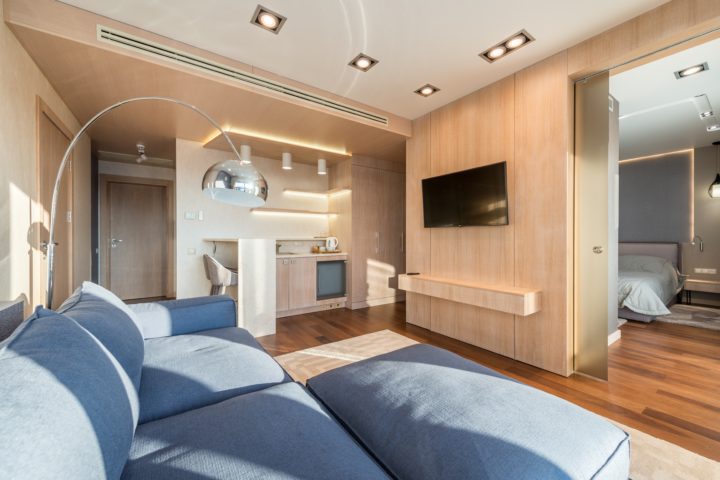The following contribution is from another author.
Smart homes are gaining in popularity. However, if you’re not sure how to get started with building your own “smart” home, or can’t afford the high cost of a pre-made smart home system, don’t worry! This blog post will give you the basics of what it takes to put together a smart family home that is affordable and easy for anyone to use.
Smart Thermostats
Programmable thermostats let you control the temperature of your house remotely. You can program them to turn on and off at specific times or set a schedule for when they should be on during the day and night. These devices are popular in new construction because they’re cheaper to install than traditional heating systems that constantly run all day long, even when the home is empty.
Smart Lighting
Smart lighting is one of the most popular features in a modern smart home. It gives you control over how your house looks, from sunrise to sunset and every hour after that.
You can control different light bulbs remotely with these systems – some change colors like an RGB bulb or are completely white for reading lamps or office spaces. You’ll also find that some smart lighting systems have remotes or apps so that you can change the mood of your house with a touch. To get the best lighting service, you can contact experts like Olympia Lighting.
Smart Smoke and Carbon Monoxide Detectors
Smart smoke detectors and carbon monoxide detectors are a must in any smart home. These devices will alert you when there is an emergency to take care of the situation asap.
Most homes use traditional fire alarms, but these new ones detect different types of fires: wood, paper, coal, or gas, just to name a few. You’ll also find that these devices come with different types of alarms, so you can pick the one that suits your needs best.
Smart Irrigation
Smart irrigation systems save water and money on your utility bills. In addition, you can control these smart sprinklers remotely so that they only turn on when it’s needed, like during a rainstorm or when the forecast says there will be an intense heatwave in the next few days.
Security Cameras
Security cameras are a must when it comes to smart home technology. These devices can automatically detect motion and send you notifications so that you know what’s going on at all times, even if you’re not there in person.
In addition to remote monitoring alerts via your phone or email, most security systems will also have two-way communication. For example, a built-in intercom that lets you talk to people who come in contact with the camera, and a two-way audio system so that you can tell them what to do next.
Smart Locks
A good lock is an essential part of any home security system. A door without a lock is just asking for trouble! Smart locks work by being able to unlock themselves when someone who has permission comes close.
Some locks also have keypads so that you can change the code at any time. This is helpful for families with small children who are constantly losing their keys! You’ll find these devices to be a lot more convenient than traditional deadbolts, and they’re much safer too.
In conclusion, you can build a smart home on any budget. So if you’re on the hunt for an affordable way to control your house remotely and make it more energy-efficient, this blog post is full of great tips that will help you get started!

















Thank You for this amzaing blog I really learned From It to meet India’s best Control and Automation Manufacturer Visit our Website fdhjs,fdhlvjkfdvj
Thank you very much for your post; it inspires us to collect more and more news in our lives. I also hope you will continue to write fantastic posts and we may continue to converse wordle website; thank you very much, io games, dear.
Thank you for producing such a fascinating essay on this subject. This has sparked a lot of thought in me, and I’m looking forward to reading more.